What's New
Displaying results 131 - 140 of 4052
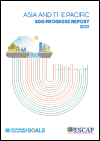
Resource | Publications,
This report analyses progress towards the Sustainable Development Goals (SDGs) in Asia and the Pacific and its five subregions as well as the availability of data. It assesses gaps which must be closed to achieve the goals by 2030. This assessment is designed to ensure the region’s actions remain on target and shortcomings are addressed as they arise. It is a resource for all stakeholders involved in prioritization, planning, implementation and follow-up of the 2030 Agenda for Sustainable Development in Asia and the Pacific.
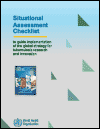
Resource | Publications,
A situational assessment is an important step in national adaptation of a global strategy. Ideally, it is conducted as part of the planning cycle in implementation of the strategy and updated every few years. The checklist presented here is designed to support countries in planning their analyses according to their own contexts. While it sets out the key principles and recommendations to frame the situational assessment, it deliberately avoids being overly prescriptive, giving countries the space and flexibility to determine what is missing, what should be strengthened and the most feasible approaches to addressing pressing challenges. It consists of four topics aligned with the four objectives of the strategy to strengthen thematic analyses.
This tool is not designed for identifying or prioritizing research gaps but rather for improving policy and strategic decisions to enhance TB research on the four thematic areas (objectives) of the global strategy. For those interested in developing a research agenda, WHO has published a toolkit that provides guidance and allows sharing of best practices.
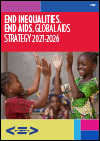
Resource | Publications,
End Inequalities. End AIDS. Global AIDS Strategy 2021-2026 is a bold new approach to use an inequalities lens to close the gaps that are preventing progress towards ending AIDS. The Global AIDS Strategy aims to reduce these inequalities that drive the AIDS epidemic and prioritize people who are not yet accessing life-saving HIV services. The Strategy sets out evidence-based priority actions and bold targets to get every country and every community on-track to end AIDS as a public health threat by 2030.
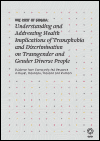
Resource | Publications,
There are a range of negative experiences trans and gender diverse people encounter when trying to access healthcare in a cis-normative society. These negative experiences, both systemic and interpersonal, produce unique stressors that can lead directly to negative health outcomes including poor physical or mental health. They can also be a barrier to utilising healthcare when a previous experience of discrimination leads to future avoidance of accessing services. It is vital to understand the nature, extent and impact of stressors on trans and gender diverse people’s use of healthcare services. Only then, interventions can be implemented to mitigate stressors and improve healthcare access and utilization.
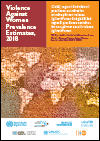
Resource | Publications,
Global, regional and national prevalence estimates for intimate partner violence against women and global and regional prevalence estimates for non-partner sexual violence against women.
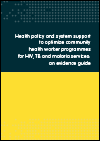
Resource | Publications,
The past two decades have seen unprecedented progress in fighting HIV, TB and malaria, although a further acceleration is required to achieve national and global goals. Progress has been uneven across regions, population groups and interventions. Achieving the ambitious goals of the Sustainable Development Agenda requires leveraging lessons learned and scientific progress, including efforts to scale up cost-effective approaches that reach key populations through wider primary health care (PHC) and health systems strengthening strategies, and ensuring adequate levels of domestic funding, complemented, where required, by development partner support.
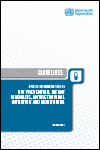
Resource | Guidelines,
These guidelines provide new and updated recommendations on the use of point-of-care testing in children under 18 months of age and point-of-care tests to monitor treatment in people living with HIV; the treatment monitoring algorithm; and timing of antiretroviral therapy (ART) among people living with HIV who are being treated for tuberculosis.
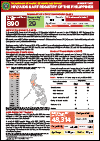
Resource | Fact Sheets,
In January 2021, there were 890 confirmed HIV-positive individuals reported to the HIV/AIDS & ART Registry of the Philippines (HARP) and this comprised 1% of the (83,755) total diagnosed cases since January 1984. Moreover, 19% (172) had clinical manifestations of advanced HIV infectiona at the time of testing.
Ninety-six percent (852) of the reported cases were male. Of the total male cases, 3% (24) reported their self-identityc as female (transgender women) at the time of testing.
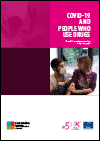
Resource | Publications,
There are many people fighting the COVID-19 pandemic with all their might, but not all of them get much public attention. Among them are the frontline workers who continue to provide much-needed health services to people who use drugs. Every day, they stand up for a group of the most vulnerable people in society: people whose drug dependence often goes hand-inhand with social and health grievances, such as HIV infection, unemployment or homelessness.
Most people who use drugs recognise the seriousness of the current situation. To minimise the risk of COVID-19 infection for themselves and/or others, they show great awareness of the risks and adhere to infection control measures in places where they use drugs or seek help.
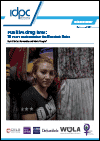
Resource | Publications,
For centuries, criminal laws, justice systems, and prisons have been designed for, and by, men. The 2010 United Nations Rules for the Treatment of Women Prisoners and Non-custodial Measures for Women Offenders, also known as the ‘Bangkok Rules’, break away from this history by establishing the first set of international human rights standards that focus on the specific needs and experiences of women deprived of liberty.
This briefing paper provides analyses the concrete ways in which punitive drug legislation has impacted upon the achievement of the Bangkok Rules, and offers several recommendations on how to translate the commitments set in the Bangkok Rules into drug policy.





